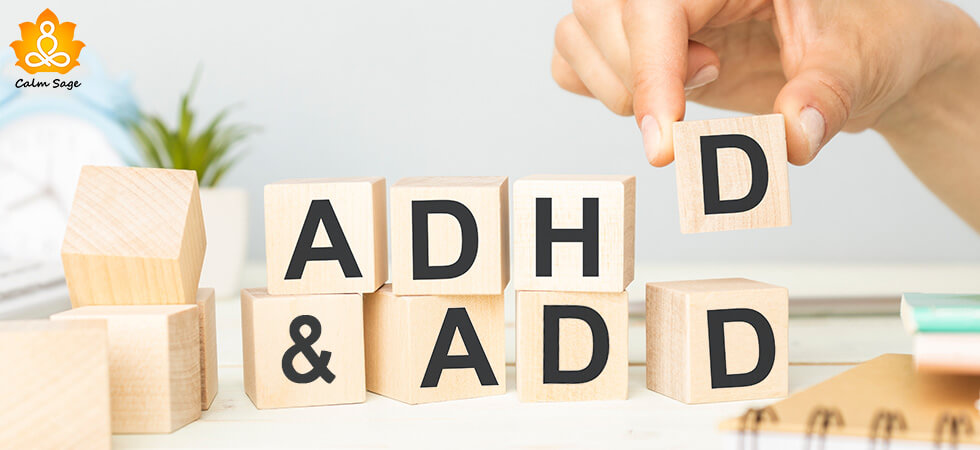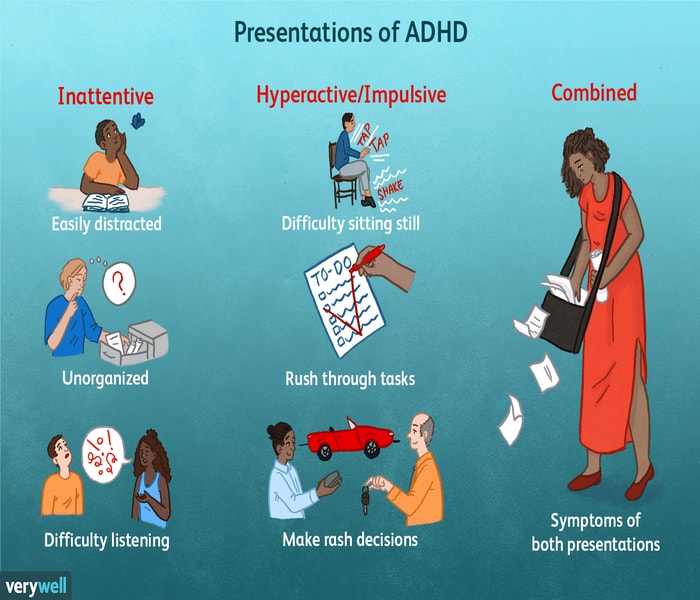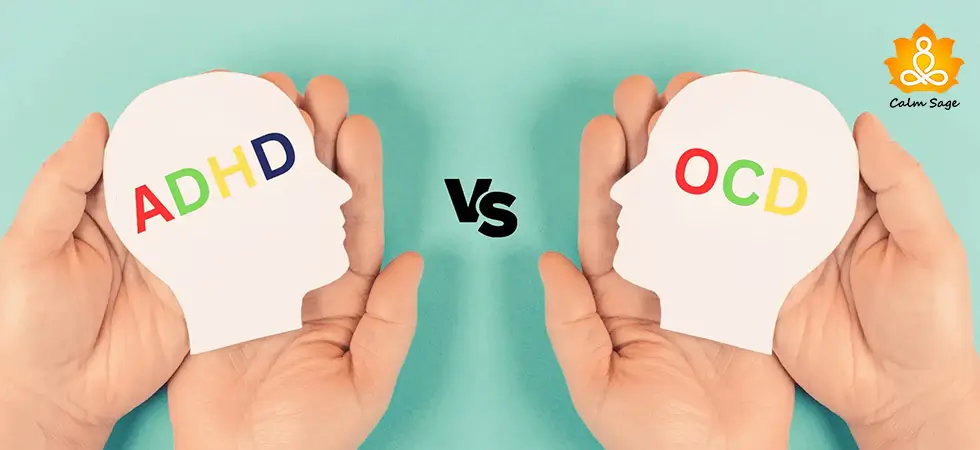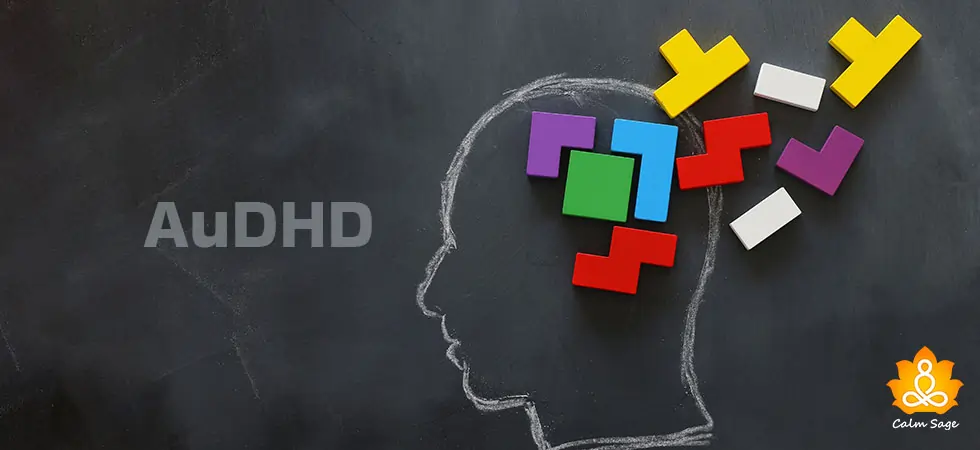ADD and ADHD: Are They The Same?

ADHD or Attention-Deficit/Hyperactivity Disorder is one of the well-known disorders in children but this varies from people to people. However, this disorder can often continue into adulthood as well. Adults with ADHD can have difficulty in their professional and personal lives.
ADD or Attention Deficit Disorder is an obsolete term that was once used to mention someone who would have had difficulty in focusing but were not hyperactive. Children or adults with ADHD tend to have tendencies to be hyperactive while children or adults with ADD will not be as hyper as the former.
Although the symptoms of ADD and ADHD differ in some ways, the term ADD is not used anymore. But many doctors and therapists use ADD to define inattentiveness and ADHD to report someone with symptoms of hyperactivity along with a lack of attention.
What Is ADHD?
ADHD or Attention Deficit Hyperactive Disorder is defined as a neurological condition that has traits such as poor attention span, hyperactivity, and poor control of impulse. ADHD has three types:
- Predominantly Inattentive: In this type of ADHD, a person has symptoms of inattentiveness but they are not hyperactive or reckless.
- Predominantly Hyperactive-Impulsive: As the term suggests, a person displays signs of hyperactivity and impulsivity but is not distractive.
- Combined: In this type, a person is hyperactive, impulsive, and shows signs of inattentiveness.
Also Read: How ADHD Affects Relationship and How to make it work
What Is ADD?
ADD or Attention Deficit Disorder is defined as a neurological condition that causes a lack of concentration, distractibility, or poor memory skills in a child or an adult. People with ADD often have trouble focusing on work, forget things such as meetings and appointments, and easily lose track of time.
ADD can also be termed as Predominantly Inattentive Type ADHD.
Difference Between ADD & ADHD

Image source: Verywell Mind
Some people use these terms interchangeably but it doesn’t necessarily mean the same thing. ADD is an informal term for one of the subtypes of ADHD i.e., Inattentive Type. The symptoms of ADD are different than those of other types of ADHD.
The symptoms of ADD are mainly; poor concentration skills, poor memory focus, easily distractible, and poor cognitive functioning while the symptoms of ADHD are; impulsiveness, hyper activeness (not necessarily inattentive), fidgety, and lack of patience.
Also Read: Signs Of Attention Deficit Hyperactivity Disorder (ADHD) In Children & Treatment
Children and adults with ADD lack hyperactivity and might appear disinterested and dreamy in their classroom or workplace and are likely to be forgetful and have poor memory and focusing skills.
For instance, a child or an adult with ADD (inattentive ADHD) may rush through their work or fail to read through things thoroughly which can lead them to make mistakes in school or at work. Similarly, they might appear uninterested in doing particular activities or tasks that may lead to more difficulties for them.Read here to Check If you have ADHD or not.
Diagnosis For ADD
If your child or someone you know has symptoms of ADD (without hyperactivity), reach out to a counselor or a physician to talk about treatment. ADD can be treated with medications, behavior intervention, and therapy.
Before taking any kind of medication, consult a child psychologist or paediatrician (in case of treating children with ADD/ADHD) and a therapist or a physician (in case of adults)
Final Words
So is ADD or ADHD the same? Not necessarily. There is a very subtle difference between ADD (attention deficit disorder) and ADHD (attention deficit hyperactivity disorder) but a difference nonetheless.
ADD is a condition where a child or an adult might display signs of inattentiveness without being hyperactive while a child or an adult with ADHD will display signs and symptoms of impulsive behavior with hyperactivity.
The symptoms of ADHD depend from person to person. Some children or adults might be inattentive and appear distracted while working on a particular task but some people might show severe symptoms of distractedness.
If your child or someone you know shows symptoms of ADD or ADHD, consult a counselor or a therapist. If they also show symptoms of depression, anxiety, or other learning disabilities, don’t hesitate to ask for help as they might worsen the symptoms.
While the symptoms of ADD and ADHD might look similar, they are two distinct conditions. In more recent times, ADD is not used as a separate condition but is considered a subtype for the latter.
Children and adults with this condition might face difficulties in their day-to-day lives but with the help of a good diagnosis and treatment from a professional healthcare provider can make their daily life easy.
“Do you think I’m weird because I’m wired, or wired because I’m weird?” – Jack Gantos
Be kind to yourself and to others and stay happy!
More Interesting Reads:
Read: How CBT Dismantles ADHD Negativity
Understand: How To Avoid Procrastination & Prioritize Goals




















